
Look at any mic online, and eventually, you’re going to come across a bunch of specs that may not make sense to you. There isn’t a standard set of specs that equate to the perfect mic, and no amount of staring at the numbers and charts is going to tell you what the mic will sound like. That said, there are a few interesting things you can learn from looking at the specs.
Transducer Type
We could go on all day about the differences between dynamic and condenser microphones, but we have articles like our Studio Microphone Buying Guide where we go into greater detail on that subject. Instead, here are a few simple distinctions between the main mic types.
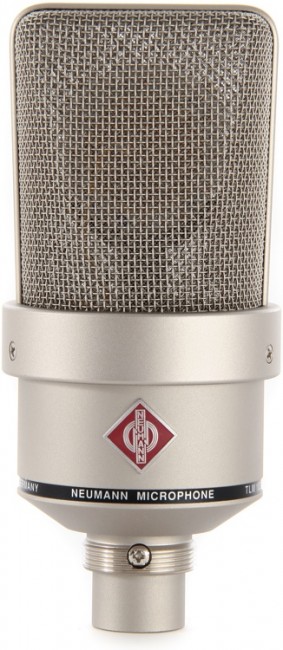
Neumann TLM 103
Condenser Microphones
Condenser microphones are more sensitive than dynamic microphones, and they pick up finer details, particularly with high frequencies and transients. They come in a variety of polar pattern configurations and all require phantom power, though some can also run on battery power. Condenser microphones can have tube electronics or solid-state electronics.
Tube condenser mics are unique in that they typically include their own power supplies, required to provide the higher voltages for the tubes. One advantage of a tube mic is that you can swap the tubes out for different sounds, just like in a guitar amp.
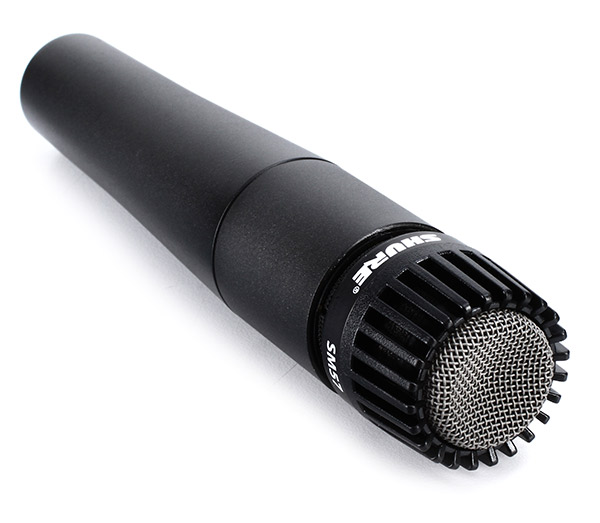
Shure SM57
Dynamic Microphones
Dynamic microphones are significantly less sensitive than most condenser mics. While that may sound like a bad thing, actually, their reduced sensitivity means they pick up sound right in front of them and don’t pick up a lot of low-level room noise. That trait makes dynamic microphones ideal for close-miking applications, such as drum mics, guitar cabs, and vocals, where the sound source is far louder than room ambience or bleed from distant sources. Though some distinction is made for special types of dynamic microphones, these distinctions don’t fall into neat categories as they do with condensers.
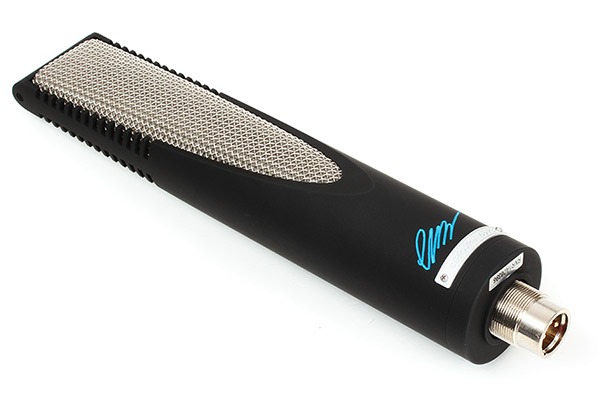
sE Electronics Rupert Neve RNR1
Ribbon Microphones
Ribbon microphones are a special type of dynamic microphone that use a thin ribbon (as thin as 100th the thickness of a human hair) to transduce vibrations into an electrical signal. They are highly sensitive, with a dark quality that often mimics the nonlinearity of human hearing. The result is a natural sound that can comfortably be shaped via EQ and dynamics.
Polar Pattern
As much as the general character of a microphone is defined by its type, its utility is largely defined by its polar pattern. That’s because no matter how and where you apply your microphones, you always need to consider room acoustics, and bleed from off-axis sources can be a real issue both in the studio and onstage. With the right polar patterns, you can isolate your mics and get the best possible sound in any situation.
Cardioid
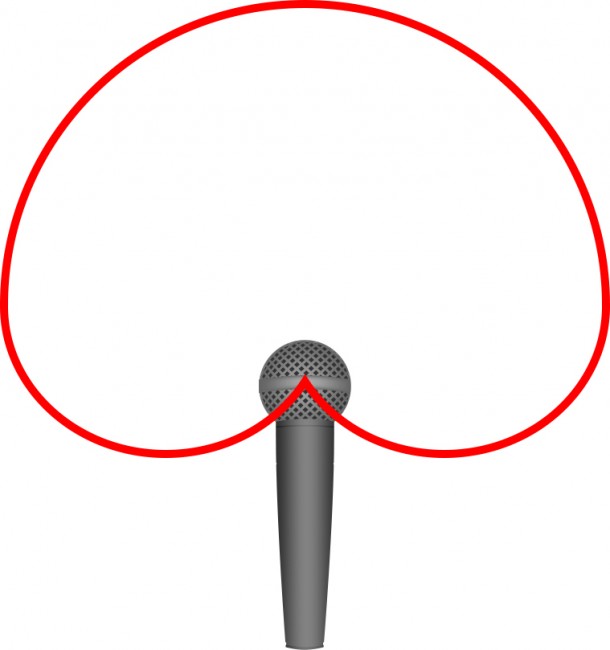
Cardioid
By far the most common category of polar pattern is the cardioid family. Cardioid actually means “heart shaped,” and if you look at a 3D rendition of a cardioid polar pattern, it looks a bit like an apple, with the stem being the body of the microphone itself. This polar pattern picks up primarily from the front, though the pattern is fairly wide and extends far out to the sides as well.
There are various types of cardioid polar patterns, the most common variations being supercardioid and hypercardioid, which are progressively narrower, trading sensitivity at the sides for a small bump in sensitivity in the rear of the mic. These variations offer better side isolation, but they can get you in trouble onstage, where the back of the mic may pick up sound from monitor wedges, increasing the potential for feedback.
Figure-8
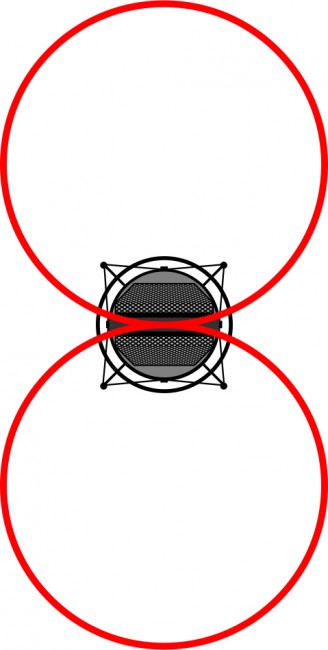
Figure-8
An often-overlooked polar pattern, figure-8 provides sensitivity on either side of the diaphragm, with total rejection on the sides. Many people start off skeptical about this configuration, until they try it; whereupon they discover that the rejection from the sides allows you to block out the majority of room reflections that you actually notice in your signal. Figure-8 is ideal for recording, where off-axis sound rejection is critically important. All ribbon microphone elements are naturally figure-8, although unidirectional ribbon mics do exist. You’ll also find it as an option on many dual-diaphragm, multi-pattern condenser microphones.
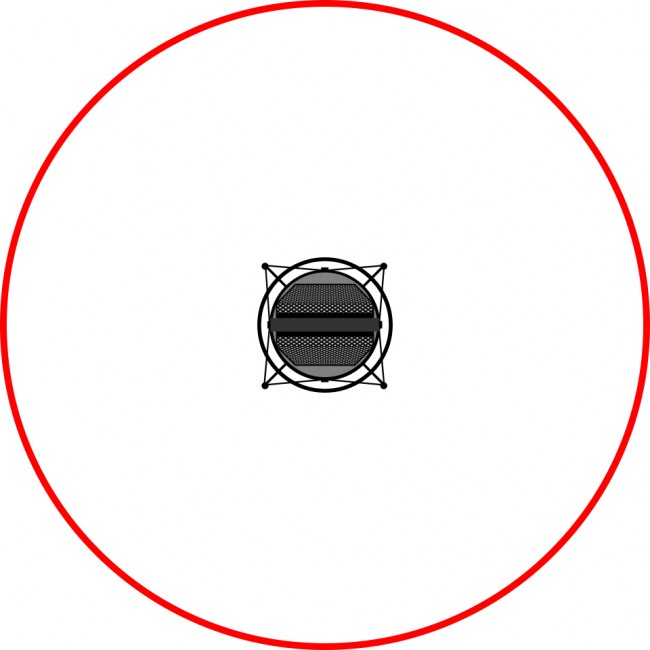
Omni
Omnidirectional (Omni)
True omnidirectional microphones pick up equally well in all directions. These microphones have a few unique qualities that make them more useful than many engineers first suspect. First of all, when you take into consideration that all diaphragm-based microphone elements, other than ribbons, are naturally omnidirectional &mash; meaning they require some form of phase shaping to achieve other polar patterns — then it’s no surprise that omni mics provide the most natural sound. This is particularly noticeable in their low-frequency response, making omni an ideal pattern when isolation isn’t an issue. When used in pairs or sets, omni mics provide a clear and natural stereo image.
Multi-pattern
Many mid- to high-end dual-diaphragm condenser microphones, such as the AKG C414 models, allow you to select from a range of polar patterns. This range usually includes one or two cardioid types (e.g., regular plus wide or tight), figure-8, and omnidirectional. A multi-pattern mic can be a real studio workhorse, especially if you play around with the various patterns and learn to use your ears to find the best sound. One nice quality of some tube mics, such as the Manley Gold Reference Mic, is a continuously variable polar pattern, which allows you to continuously contour the shape to suit your needs.
Specialized Polar Patterns (Line and Half Patterns)
There are a few additional polar patterns you’ll come across that are only found on specific kinds of microphones.
-
Line
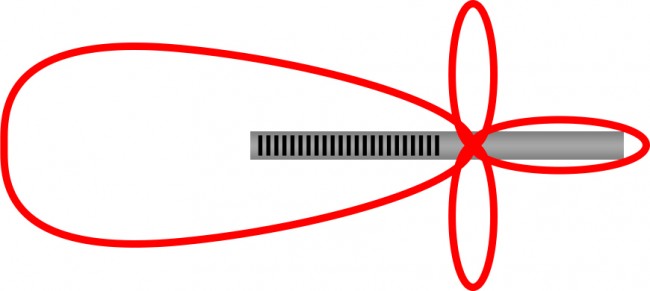
Line – Shotgun
Shotgun microphones have a highly directional line polar pattern. These mics are sometimes categorized as hypercardioid, but the line polar pattern is rather unique. By situating a condenser element at the back of a tube lined with phase ports, shotgun mics create a highly directional polar pattern.
-
Boundary Mics

Half Cardioid
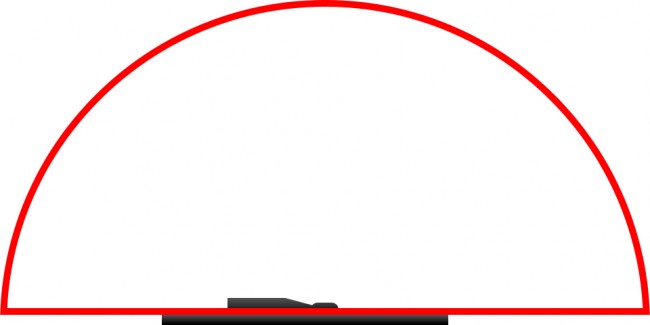
Half Omni
These rectangular flat microphones are often used in live performances to capture sound from the stage. A pressure zone microphone (or PZM) is inherently omnidirectional, but because of its flat shape, which places the element on the floor or another flat surface, the polar patterns are effectively cut in half, sometimes described as half-omni.
Frequency Range
The frequency range of a microphone presents the results of a standardized test that indicates its target operating range. This spec, offered as low and high frequency limits such as 50Hz-15kHz, doesn’t indicate the plotted frequency response, which reveals details regarding the dips and peaks within that frequency range.
Frequency Response
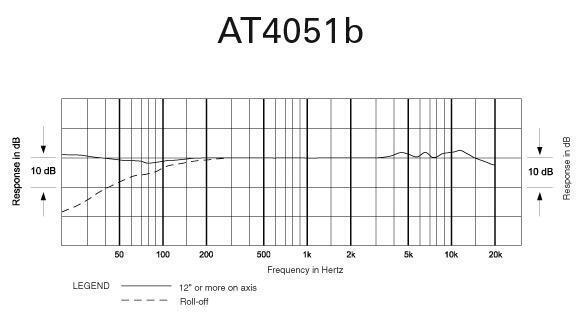
Presented as a graphic chart, the frequency response tells you quite a bit about the character of a microphone. The chart itself visually represents the frequency range, with the horizontal axis displaying the frequency and the vertical axis displaying the variation in decibels responding to a fixed volume frequency sweep. One important thing you want to look for in these charts is the scale of the vertical axis. Two charts can look virtually identical, but when you see a difference of +/-3dB compared to +/-1dB, the sound of the microphone is going to be dramatically different.
Max SPL
A common specification for microphones, Max SPL indicates the highest sound pressure level a mic can handle before the onset of distortion. For condenser mics, this distortion can occur in the often-overlooked gain stage inside the mic, due to its need to be close to the diaphragm. Sound entering the microphone at too high a sound pressure level (SPL) will cause this amplifier to distort. The Max SPL rating of a microphone indicates the level above which that distortion will occur. The Max SPL spec serves best as a comparison, allowing you to see which microphone among several can handle the loudest sounds.
Impedance
Variable impedance preamps have become quite the rage in recent years, ostensibly used to match the mic’s output impedance to the input impedance of the preamp. Frequently they are used as just another variable in determining the sound of a mic. Mic output impedances can range widely, from the 30/150/250-ohm taps on a 1930s RCA 44-BX ribbon mic all the way up to 25,000 ohms or greater. The input impedance that the output of the microphone “sees” will alter the sound of the mic. Without getting into details about matching or bridging input impedance (or Z), suffice it to say that microphone output impedance was a far more meaningful consideration in years past. With higher input impedances on consoles and preamps today, some as high as 1 Mohm (1 million ohms), most low-Z microphones will work fine wherever you plug them in.
Sensitivity
Sensitivity is another standardized spec that represents the ratio of the output voltage to the acoustic input pressure. If you’re comparing two or more microphones, the mic with higher sensitivity will have a hotter output level given the same acoustic input.
As you can see, it’s pretty easy to get lost in microphone specs. While nothing will replace proper engineering and a good pair of ears, we hope this guide will make wading through mic specs easier and more rewarding.



